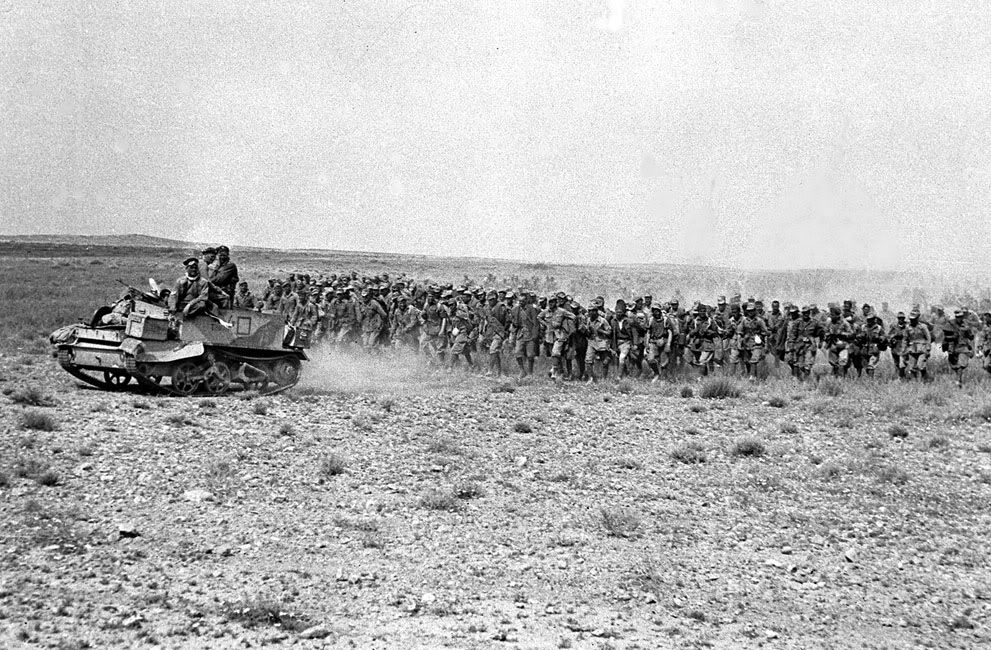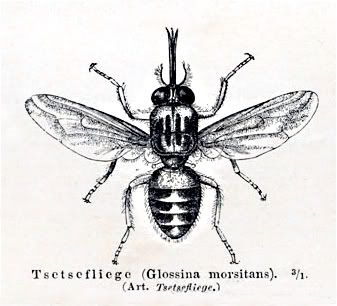WWII North African Campaign
The North African Campaign began in June of 1940 and continued for three years, as Axis and Allied forces pushed each other back and forth across the desert. At the beginning of the war, Libya had been an Italian colony for several decades and British forces had been in neighboring Egypt since 1882. The two armies began skirmishing almost as soon as Italy declared war on the Allied Nations in 1940. Italy invaded Egypt in September of 1940, and in a December counterattack, British and Indian forces captured some 130,000 Italians. Hitler's response to this loss was to send in the newly formed "Afrika Korps" led by General Erwin Rommel.
Several long, brutal pushes back and forth across Libya and Egypt reached a turning point in the Second Battle of El Alamein in late 1942, when Lieutenant-General Bernard Montgomery's British Eighth Army broke out and drove Axis forces all the way from Egypt to Tunisia.
In November, Operation Torch brought in thousands of British and American forces.
They landed across western North Africa, and joined the attack, eventually helping force the surrender of all remaining Axis troops in Tunisia in May of 1943 and ending the Campaign for North Africa
.

Operation Torch Details: On the morning of November 8, 1942, a force of over 70,000 American and British soldiers went ashore on the coast of Vichy French North-West Africa, and a period of close Anglo-American co-operation began. Altogether over 500 ships had carried and guarded the assault force: 102 of them crossing the Atlantic from America; the remainder sailing in two convoys - one fast and one slow - from Britain. They all arrived at their destinations within a few hours of each other and a pattern of smooth timing and organization had been set.
The Allied Fleet: The landing of 70,000 men between Casablanca and Algiers required a lot of transports and warships. Six pre- and four attack convoys with a total of 250 vessels from Britain went out into the sea, four more convoys with a total of 136 ships directly from the United States. For the escorts, which were concerned for the security of the convoys, this was a heavy responsibility. Including the artillery support and the command ships for Operation Torch, there were
6 battleships,
5 fleet carriers,
7 escort carriers,
15 cruisers,
81 destroyers and
38 escort vessels of different types involved. Unfortunately, most of the aircraft carriers and escort vessels had to be withdrawn from the Battle of the Atlantic, where they were bitterly missed in the following months.
Weather Conditions: Expect daily average temperatures to be 100 degrees or higher, dry, and intermittent periods of high wind with accompanying sand storms and visibilities as low as 1 statute mile.
Medical Considerations: Extreme heat, dry conditions, and an unusual infestation of TseTse flys will make daily operations exceptionally challenging.

Allied Aircraft: Boston, B-25C, Spit V, HurricaneI and IIC , P40B/E, L-4 (Storch Sub), Operation Torch U.S. Navy Air Support F4F, TBF, SBD
Allied Vehicles: M3, M8, M4A1, LVT, Jeep
Axis Aircraft: Me109E/F, ME110C, JU87D, JU88, JU52(C-47 Sub), C202, FW190, Storch.
Axis Vehicles: TigerI, SDKFZ-251, Jeep
Settings:
Icons: Enemy OFF, Friendly 3000
VOX: 123 both sides